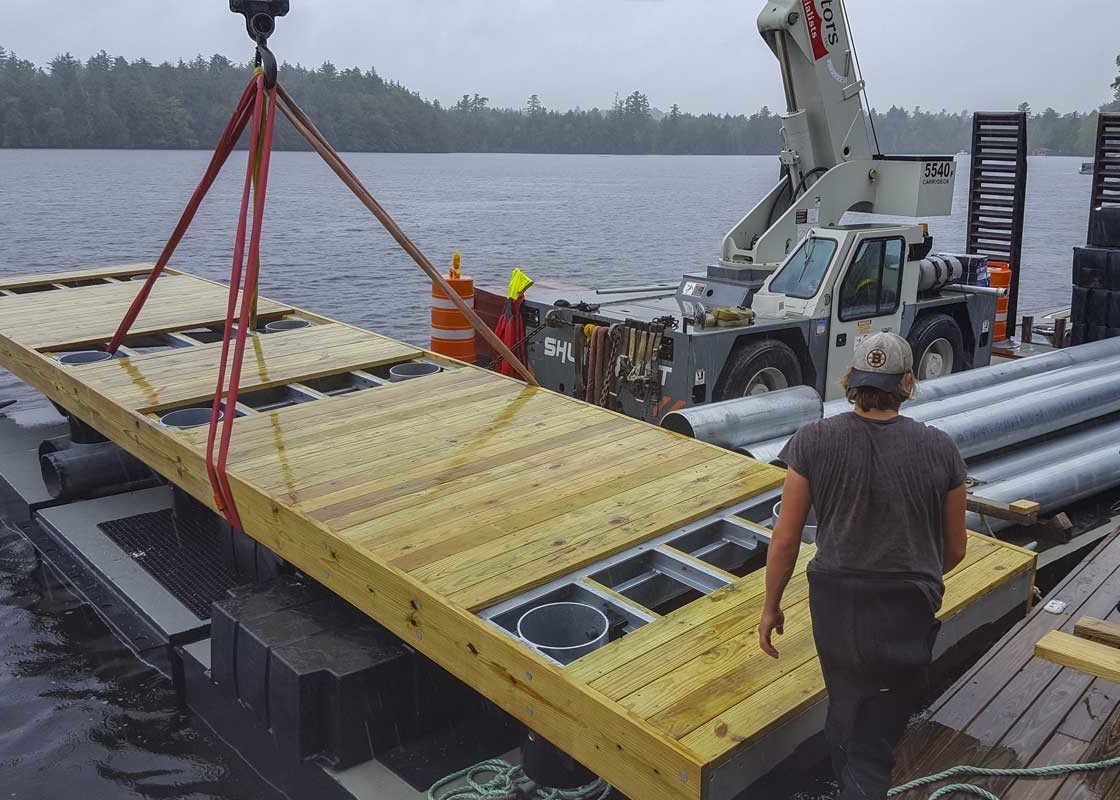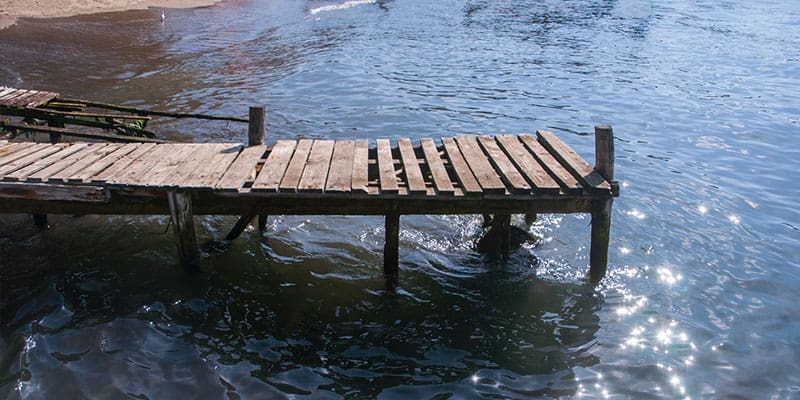How to Select the Right Service for Your Dock Repairs
How to Select the Right Service for Your Dock Repairs
Blog Article
Effective Dock Repair Work Techniques: Making Certain Structural Stability
Guaranteeing the architectural stability of docks via efficient repair strategies is extremely important for the longevity and safety of aquatic facilities. This includes a multi-faceted technique starting with extensive evaluations utilizing innovative innovations like finder devices and from another location ran cars (ROVs) to spot both noticeable and hid problems. Ultimately, selecting the best repair work materials, such as corrosion-resistant alloys and composite materials, is crucial for longevity. Structural support techniques, consisting of the application of cross-bracing systems and load-distribution plates, play an essential duty in mitigating stress points. The relevance of these techniques comes to be noticeable when discovering innovative repair service approaches and preventative maintenance methods.
Analyzing Dock Damages
Analyzing dock damage is a critical initial action in making certain the architectural stability and safety of any type of docking facility. Secret aspects to check out include the dock's structure, pilings, decking, and equipment (Dock Repairs).
Architectural designers or certified examiners commonly do these assessments utilizing specialized techniques and tools. Undersea evaluations could employ finder tools or remotely ran lorries (ROVs) to find immersed damages. Over water, aesthetic evaluations are enhanced by utilizing wetness meters and other analysis tools to reveal underlying issues not instantly visible to the naked eye.

Deciding On Repair Products
Selecting the suitable repair materials is a crucial action in the dock restoration process, one that straight influences the durability and efficiency of the fixed framework. Product choice must be driven by elements such as ecological conditions, load-bearing requirements, and compatibility with existing dock parts. As an example, wood is a typical choice for docks due to its all-natural strength and aesthetic allure. Nevertheless, picking the appropriate kind of wood, such as pressure-treated lumber or normally rot-resistant types like cedar or teak, is vital to withstand aquatic atmospheres.
Along with timber, composite materials are significantly prominent as a result of their resilience and low upkeep needs. Composites, typically made from a blend of plastic and wood fibers, use excellent resistance to rot, pests, and UV damage. For metal anchors, choosing corrosion-resistant alloys such as galvanized steel or marine-grade aluminum is vital to avoid corrosion and make sure structural integrity in saline water problems.
Epoxy materials and marine-grade sealants are important for fixing splits and sealing joints, providing a water-proof barrier and improving the dock's total strength. By meticulously choosing high-quality materials, dock repairs can accomplish resilient outcomes, consequently guarding versus future deterioration and making certain safe, reputable use.
Structural Reinforcement Techniques
Efficient architectural reinforcement methods are essential in making sure the security and long life of dock repairs. One fundamental method involves the usage of steel or composite reinforcement bars (rebar) within concrete structures. Rebar supplies additional tensile strength, protecting against fractures and dispersing lots extra evenly. This method is especially effective for anchors subjected to heavy loads or harsh environmental conditions.
An additional crucial method is the application of fiber-reinforced polymers (FRP) These products use high strength-to-weight proportions and excellent resistance to deterioration, making them excellent for reinforcing wood or concrete docks. FRP can be applied in strips or sheets and bonded with epoxy resins to enhance architectural stability.
Supporting and securing systems additionally play an important role in architectural reinforcement. Cross-bracing, using steel or wooden light beams, can counteract side pressures, minimizing swaying and activity. Anchoring systems, such as helical piers or driven heaps, provide a secure structure by transferring loads to deeper, a lot more stable dirt layers.
Last but not least, the assimilation of load-distribution plates can assist distribute weight extra uniformly throughout the dock's surface area, reducing local tension factors. These techniques jointly make certain that anchors stay robust and secure, qualified of enduring the rigors of their functional environment.
Advanced Repair Work Approaches

One more innovative method includes underwater welding, which permits for repair work to be carried out without the demand to dewater the location. This approach is particularly advantageous for dealing with architectural problems in submerged dock parts, making certain marginal interruption to operations. Boosted welding methods, paired with robotic systems, provide accuracy i thought about this and dependability, consequently extending the lifespan of the dock.
In addition, cathodic defense systems are applied to stop corrosion in metal dock structures. By utilizing sacrificial anodes or satisfied existing systems, these methods efficiently alleviate the electrochemical procedures that lead to product degeneration.
Last but not least, advanced tracking modern technologies, such as structural health and wellness monitoring (SHM) systems, provide real-time data on the problem of dock frameworks. These systems enable aggressive upkeep and prompt interventions, ultimately making sure the lasting structural stability of the dock.
Maintenance and Avoidance
Maintenance and prevention are fundamental concepts that underpin the durability and safety and security he said of dock structures. Normal inspections are extremely important, enabling early detection of deterioration, potential weak points, and environmental effects. A positive technique, involving routine checks for rust, rot, and architectural changes, mitigates costly fixings and prolongs the dock's functional life.
Safety nets must include using safety coverings to metal elements to guard versus rust and using cured timber to withstand degeneration. Additionally, making certain appropriate water drainage and air flow can stop water buildup, which is a common reason for architectural degradation. Integrating high quality materials and sticking to producer standards during construction and repair service stages also play crucial duties in boosting longevity.

Training workers in dock upkeep ideal methods makes sure regular application of preventative procedures. Leveraging technological breakthroughs, such as drones for examinations and sensing units for real-time surveillance, can better enhance upkeep initiatives. By prioritizing upkeep and avoidance, dock owners can make sure structural stability, functional safety and security, and economical monitoring over the dock's lifespan.
Conclusion
In final thought, preserving the architectural honesty of aquatic centers demands thorough dock repair service methods. Complete examinations making use of advanced tools uncover both noticeable and hid problems, while the selection of proper repair work materials boosts toughness. Carrying out structural support techniques explanation addresses anxiety factors properly. Advanced repair techniques, paired with regular upkeep practices, guarantee the dock remains risk-free and operational under varied ecological conditions. Adopting these approaches dramatically lengthens the life expectancy and functionality of aquatic framework.
Making certain the structural integrity of docks with reliable repair work methods is critical for the long life and safety and security of marine facilities.Selecting the appropriate repair service materials is a crucial action in the dock reconstruction process, one that straight influences the longevity and performance of the fixed framework.Efficient structural support techniques are critical in ensuring the stability and long life of dock repair services. By prioritizing upkeep and prevention, dock owners can guarantee architectural stability, operational safety and security, and economical monitoring over the dock's life expectancy.
In verdict, keeping the structural stability of marine facilities requires thorough dock repair service methods.
Report this page